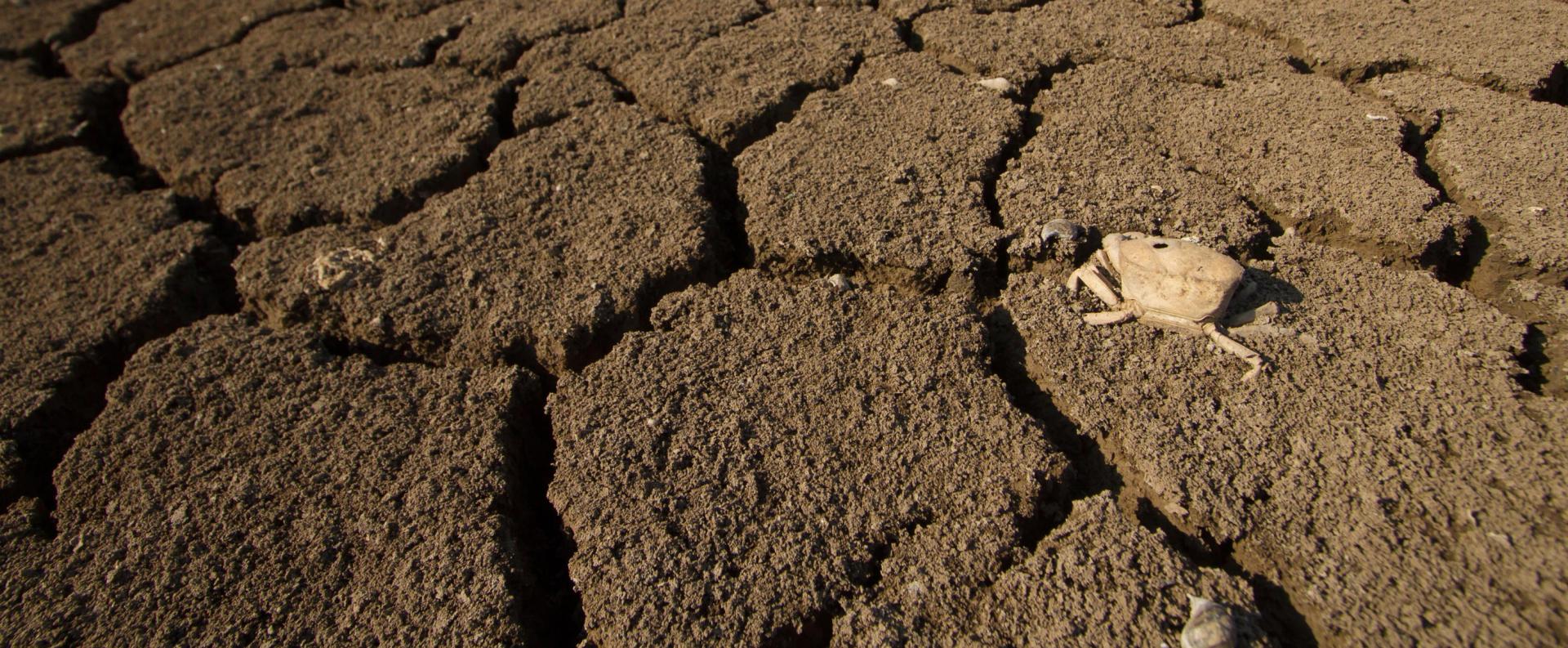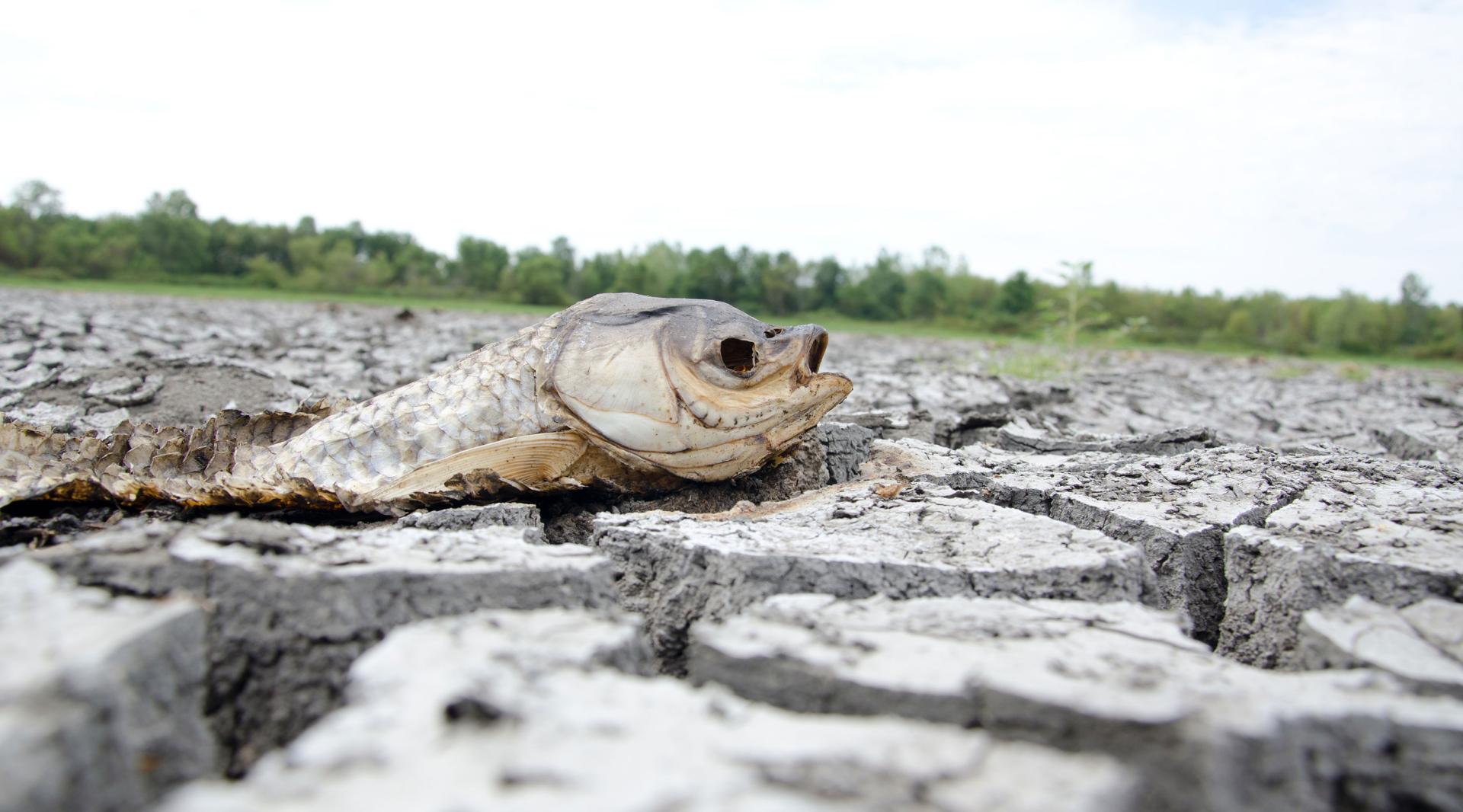Ecological Drought
Healthy ecological systems support every form of life by providing food, water, and energy; regulating pests, floods, and diseases; supporting spiritual, recreational, and cultural activities; and sustaining other critical functions, including soil formation, pollination, and nutrient cycling. Drought can alter or degrade any or all of these functions and services at a local, landscape, or system scale.
What Is Ecological Drought?
Droughts and other natural hazards have been part of Earth’s natural processes since the beginning of time. Plants, animals, and ecological systems have adapted and evolved with these hazards. When driven beyond their capacity to adapt, ecosystems may cross critical thresholds, resulting in temporary or permanent alteration in their composition, structure, and/or functioning at local or landscape scales. The vulnerability of natural systems to withstand or adapt to drought disturbances depends on the sensitivity of the system, its exposure to the hazard, and its capacity to adapt and recover from drought.
Ecological drought is an “episodic deficit in water availability that drives ecosystems beyond thresholds of vulnerability, impacts ecosystem services, and triggers feedbacks in natural and/or human systems” (Crausbay et al. 2017). Examples of drought impacts to ecological systems may include:
- Reduced plant growth over a season or permanently
- Local species reduction or extinction
- Landscape-level transitions, such as forest conversion to non-forested vegetation, which may in turn reduce water retention in soils
- Freshwater ecosystems may change flow regimes, increase water temperature, and deteriorate water quality, which may result in fish kills, reduced opportunities for recreation, and decreased hydropower production.
Ecological drought may be driven by natural phenomena, such as lack of rainfall or warming temperatures, and it may result in or be exacerbated by multiple competing demands on existing limited water supplies. Thus, land use and water allocation decisions may drive or exacerbate ecological drought; for example, modification of hydrological processes to store water prior to drought may reduce water available to ecosystems.
According to recent research, major large-scale ecological changes “are becoming more commonplace as anthropogenic climate change drives more extreme high temperatures, greater evaporative demand (a ‘thirstier’ atmosphere), faster onset, longer duration, and altered timing of drought conditions that cross ecological thresholds, e.g., Smith [2011a, 2011b] and Allen et al.,” creating “novel forms of drought ... globally, challenging our ability to anticipate and manage drought impacts” (Crausbay et al. 2020).

Monitoring, Forecasting, and Assessing Impacts of Ecological Drought
The majority of tools available for drought monitoring, forecasting, and assessing impacts focus on drought in relation to human food and water supplies. However, some research suggests that using these common meteorological or hydrological drought indices “can result in mischaracterizing the severity and impact of ecological drought.” The limited number of tools and data available for monitoring, forecasting, and assessing ecological drought may be due, in part, to the challenge of measuring complex ecological systems, a lack of historical ecological data, and the relative paucity of comprehensive datasets on ecological systems. As a result, there is limited understanding of the ecological changes over long periods of time that can result from drought and of the magnitude or persistence of these impacts from droughts of different levels of severity or duration in different locations.
Recently, the scientific gaps in our understanding of when and where processes that maintain ecological stability will be overwhelmed and drought-induced ecological transformation might occur were identified (Crausbay et al. 2020). Examples of knowledge gaps include the need to predict mortality events, to understand how ecological community assembly will unfold under the now unfamiliar climates of drought recovery, and to know when common management tactics to resist ecological transformation might fail, or on the other hand, when tactics could be directed to allow ecological transformation along a particular trajectory.
Key Takeaways

Planning for Ecological Drought
Recent research on planning for ecological drought highlights that, while some planning processes acknowledge ecological drought, they rarely identify or assess the vulnerability of all ecological aspects in a landscape that stakeholders value. Recent research and practice have been developing new approaches and tools, such as identifying and estimating costs of ecosystem service losses, that can be incorporated into planning for drought and other hazards. For example, nature-based solutions seek to sustainably manage, enhance, or restore ecological systems, with the goal of maintaining, enhancing, and/or realizing co-benefits of ecosystem services (e.g., forest restoration to reduce urban flood impacts and provide for recreation). Similarly, water management approaches that integrate environmental flows into planning seek to address ecological water demands in addition to agricultural, industrial, and other water demands.
The U.S. Geological Survey (USGS), through its national and regional Climate Adaptation Science Centers, has led early efforts to examine the effects of ecological drought across the country. Its Ecological Drought initiative supports the management of ecosystems and human communities in the context of drought, by identifying and synthesizing knowledge of the ecological impacts of drought, communicating that knowledge, and strengthening decision-making to prepare for and respond to drought. To help meet this aim, NIDIS was proud to serve on the SNAPP Ecological Drought Working Group, focused on understanding the natural and human dimensions of ecological drought impacts, and promoting the application of solutions that provide mutual benefits to people and nature. To learn more, view the USGS story map, Ecological Drought Across the Country.
A recently-funded NIDIS project, led by Conservation Science Partners, Inc., seeks to better understand ecological impacts of droughts by strengthening our understanding of ecological drought vulnerability and translating and delivering that information for drought planning processes.
Key Takeaways
Resources
References
Drought as an Emergent Driver of Ecological Transformation in the Twenty-First Century
BioScience, July 2024
Unfamiliar Territory: Emerging Themes for Ecological Drought Research and Management
One Earth, 3(3), September 2020
Planning for Ecological Drought: Integrating Ecosystem Services and Vulnerability Assessment
WIREs Water, 6(4), May 2020
Robust Ecological Drought Projections for Drylands in the 21st Century
Global Change Biology, 26(7), April 2020
Small-Scale Water Deficits After Wildfires Create Long-Lasting Ecological Impacts
Environmental Research Letters, 15(4), March 2020
An Integrated Framework for Ecological Drought across Riverscapes of North America
BioScience, 69(6), May 2019
Ecological Drought: Accounting for the Non-Human Impacts of Water Shortage in the Upper Missouri Headwaters Basin, Montana, USA
Resources, 7(1), February 2018
Defining Ecological Drought for the Twenty-First Century
Bulletin of the American Meteorological Society, 98(12), December 2017
Web Resources
Ecological Drought
The Science for Nature and People Partnership (SNAPP)
FY22 Coping with Drought Research Projects: Ecological Drought
National Integrated Drought Information System
Ecological Drought: Assessing Vulnerability and Developing Solutions for People and Nature
USGS Climate Adaptation Science Centers
Ecological Drought Across the Country
USGS Climate Adaptation Science Centers
Extremes to Ex-Streams: Ecological Drought Adaptation in a Changing Climate
Climate Adaptation Knowledge Exchange (CAKE)
Ecological Drought: Exploring Impacts on Natural/Cultural Resources (Video)
U.S. Geological Survey
Managing Drought in Forest Ecosystems
USDA Forest Service Southern Research Station
Tree Atlas
USDA Forest Service Northern Research Station
How Does Drought Affect Our Lives?
National Drought Mitigation Center
Drought and Wildlife: Explore the Connection
Michigan State University Extension
Coexisting with Wildlife During Drought
National Environmental Education Foundation

Impacts and Related Content
Diminished Ecosystem Services
Drought impacts to ecological systems may diminish, alter, or extinguish the resources and services provided by those systems, including clean water, agricultural production, wildlife habitat, and sufficient water levels for recreation, tourism, and aquatic species.
Human Decisions and Ecological Drought
Water allocations and land-use decisions can drive or exacerbate ecological drought.
By Sector | Ecosystems
Long periods without precipitation can alter the delicate balance of ecosystems. Learn more about how natural resource managers can prepare for and mitigate the effects of drought.
Drought Research | Ecological Drought
NIDIS is funding seven 2-year projects through its FY22 Coping with Drought: Ecological Drought research competition, which focus on research and tools to improve our understanding and management of drought risk in terrestrial and aquatic ecosystems. Explore these projects.
Ecological Drought Webinar Series
NIDIS and the U.S. Geological Survey National Climate Adaptation Science Center (NCASC) co-organized a series of four webinars on ecological drought to raise awareness of ecological drought and share new research and practical actions from across the nation to strengthen ecosystem resilience to drought. View recordings, key takeaways, and research needs identified during the webinar series.
Recordings of the individual webinars are also available below:


